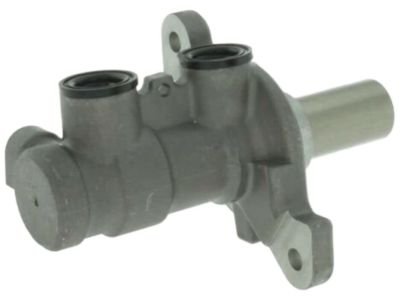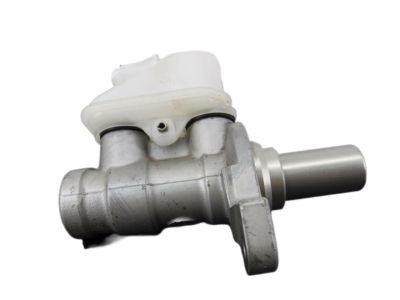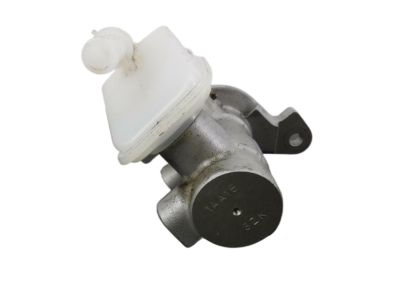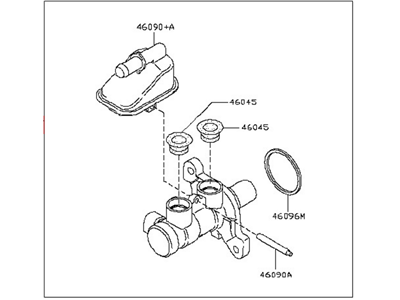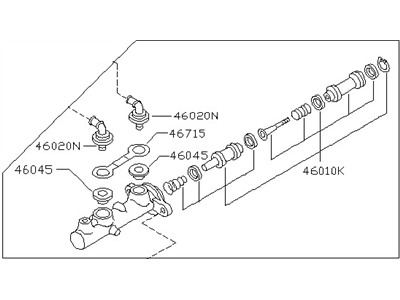×
- Hello
- Login or Register
- Quick Links
- Live Chat
- Track Order
- Parts Availability
- RMA
- Help Center
- Contact Us
- Shop for
- Nissan Parts
- Nissan Accessories

My Garage
My Account
Cart
Genuine Nissan Quest Brake Master Cylinder
- Select Vehicle by Model
- Select Vehicle by VIN
Select Vehicle by Model
orMake
Model
Year
Select Vehicle by VIN
For the most accurate results, select vehicle by your VIN (Vehicle Identification Number).
10 Brake Master Cylinders found

Nissan Quest Cylinder Assy-Brake Master
Part Number: D6010-1AA1B$283.65 MSRP: $432.92You Save: $149.27 (35%)Ships in 1-3 Business Days
Nissan Quest Brake Master Cylinder
If you need any OEM Nissan Quest Brake Master Cylinder, feel free to choose them out of our huge selection of genuine Nissan Quest Brake Master Cylinder. All our parts are offered at unbeatable prices and are supported by the manufacturer's warranty. In addition, we offer quick shipping to have your parts delivered to your door step in a matter of days.
Nissan Quest Brake Master Cylinder Parts Questions & Experts Answers
- Q: How do you replace a master cylinder on Nissan Quest?A:The Brake Master Cylinder is located in the engine compartment, mounted to the power brake booster. Begin by removing as much fluid as possible from the reservoir using a syringe or an old turkey baster. Disconnect the two reservoir hoses from the Brake Master Cylinder, placing a shop rag underneath to catch any excess brake fluid. Prepare rags under the fluid fittings and have caps or plastic bags ready to cover the ends of the lines once disconnected, taking care to avoid spilling brake fluid, which can damage paint. Loosen the fittings at the ends of the Brake Lines where they enter the Brake Master Cylinder, using a flarenut wrench to prevent rounding off the corners on the nuts. Pull the brake lines slightly away from the Brake Master Cylinder and plug the ends to prevent contamination. Remove the nuts attaching the Brake Master Cylinder to the power booster, then carefully pull the Brake Master Cylinder off the studs and out of the engine compartment, noting that some models may have a fuel filter bracket that needs to be transferred to the new Brake Master Cylinder. After mounting the new Brake Master Cylinder, bleed it since it has an external reservoir. Install the Brake Master Cylinder over the studs on the power brake booster and tighten the attaching nuts finger tight. Thread the brake line fittings into the Brake Master Cylinder, adjusting its position slightly for easier threading. Fully tighten the mounting nuts and brake line fittings to the specified torque. Fill the Brake Master Cylinder reservoir with the recommended fluid and bleed the Brake Master Cylinder by having an assistant depress the Brake Pedal and hold it to the floor while loosening the hydraulic line fitting to allow air and fluid to escape, repeating this until the fluid is clear of air bubbles. Ensure to have plenty of rags on hand to catch any fluid, as brake fluid can ruin painted surfaces, and rinse the area under the Brake Master Cylinder with clean water after bleeding. Proceed to bleed the entire brake system and fill the Brake Master Cylinder reservoir with the recommended brake fluid. Finally, test the operation of the brake system carefully before returning the vehicle to normal service.
Related Nissan Quest Parts
Browse by Year
2017 Brake Master Cylinder 2016 Brake Master Cylinder 2015 Brake Master Cylinder 2014 Brake Master Cylinder 2013 Brake Master Cylinder 2012 Brake Master Cylinder 2011 Brake Master Cylinder 2010 Brake Master Cylinder 2009 Brake Master Cylinder 2008 Brake Master Cylinder 2007 Brake Master Cylinder 2006 Brake Master Cylinder 2005 Brake Master Cylinder 2004 Brake Master Cylinder 2003 Brake Master Cylinder 2002 Brake Master Cylinder 2001 Brake Master Cylinder 2000 Brake Master Cylinder 1999 Brake Master Cylinder 1998 Brake Master Cylinder 1997 Brake Master Cylinder 1996 Brake Master Cylinder 1995 Brake Master Cylinder 1994 Brake Master Cylinder 1993 Brake Master Cylinder

